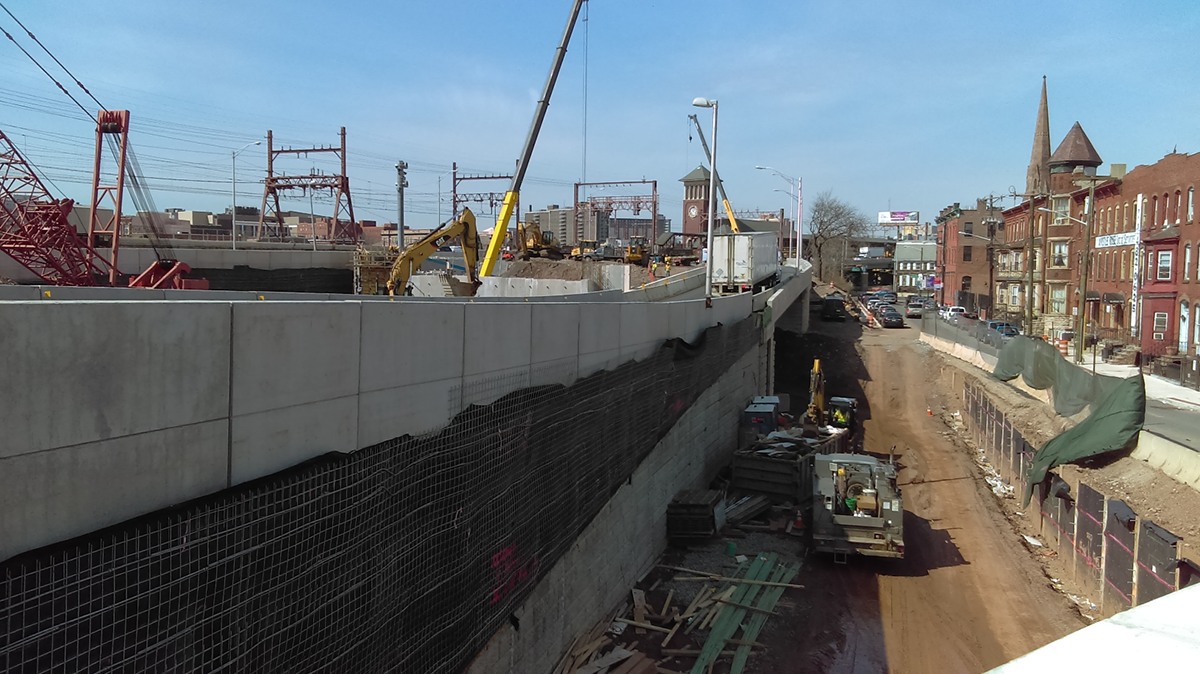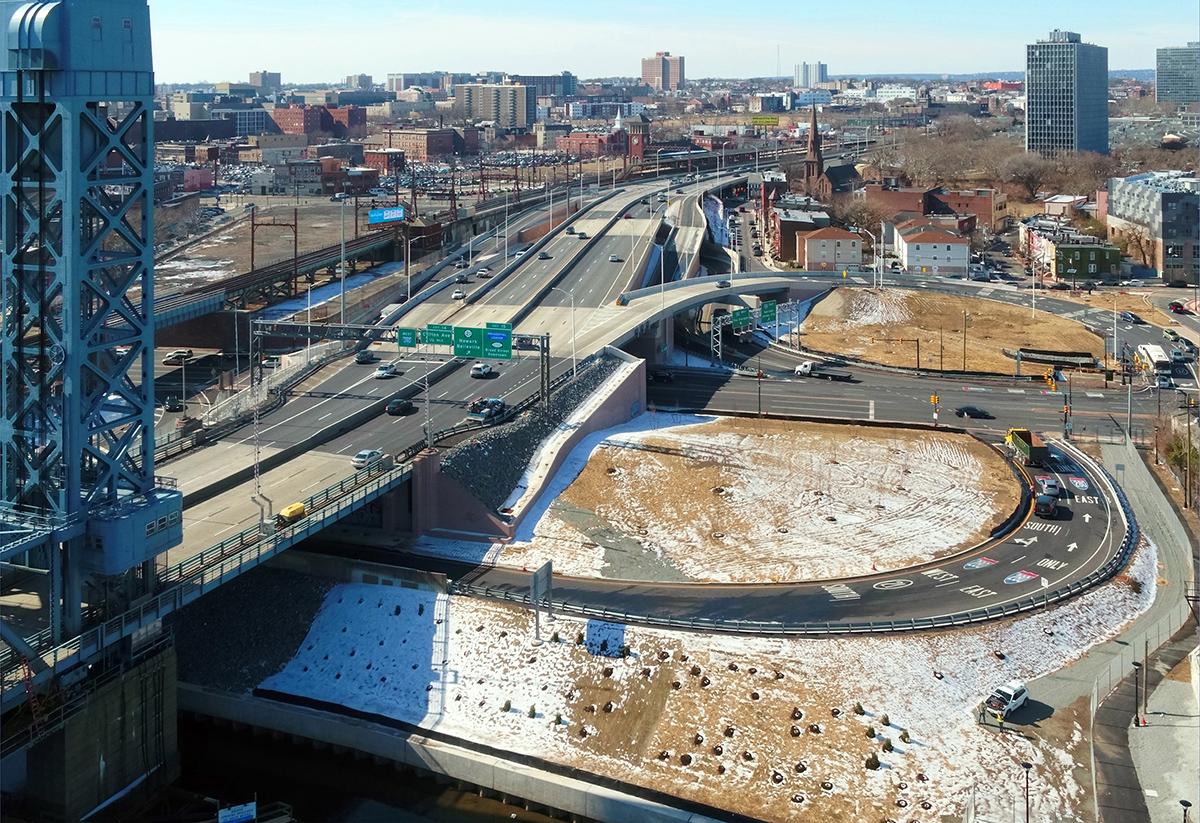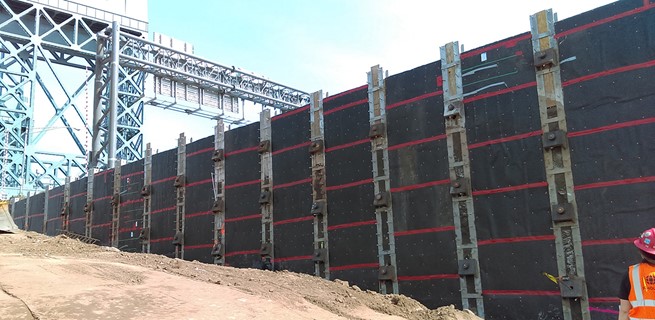I-280/Route 21 Interchange Improvements
Newark, New Jersey
Newark faced a considerable challenge requiring innovative thinking, incredible cooperation and effective communication. A major interchange – built to standards now lapsed, positioned in a crowded urban location, surrounded by historic landmarks, sitting atop a brick-lined sewage system, and navigating thousands of motorists through a dangerous ramp and merging configuration – needed to be rethought, redesigned, rebuilt, and reborn.
The answer was the Route 280/21 Interchange Improvements project, a highly-complex $95 million reconstruction located in New Jersey’s largest city. Designer Michael Baker International, client New Jersey Department of Transportation (NJDOT) and contractor George Harms Construction successfully addressed the safety and efficiency of the interchange, corrected geometric deficiencies, provided missing interchange movements, optimized I-280 throughput and improved the corridor’s condition and reliability.
Connecting the NJ Turnpike and Garden State Parkway, the interchange is separated from I-280 by a local street serving a historic district and buildings to the north. NJ Transit tracks run to the south, while the historic Stickel drawbridge stands to the east. Sustaining the daily flow of 80,000+ vehicles – threading a needle among steel, concrete, and an array of constituents – represented the major challenge of the project.
The project team replaced and constructed four new bridges, rehabilitated two existing bridges, widened and shifted the Interstate to add shoulders, constructed three missing moves, and eliminated two direct Interstate ramps onto local roads. The project included intricate ramp design and flyovers in a confined urban area, including one curved girder structure; 11 retaining walls of various types; four sign structures; a new bulkhead; extensive utility relocations; disposal of hazardous material and identification of cultural resources.
All details – utilities, drainage, operations, traffic, intricate staging, historic structures, and more – were well-coordinated and the team took public support into account. Stringent quality control was maintained, with checks and balances implemented.
Minimizing impacts to historic structures – like Plume House and House of Prayer Episcopal Church – also was vitally important. The team coordinated closely to update nearby utilities and reduce/eliminate vibrational impacts. The innovative solution strengthened the existing footing with post-tensioning and pin piles to reduce vibrations.

Impact
“For decades, the original I-280 ramps poorly served motorists and neighboring communities. The team maximized the traffic-serving capabilities of the freeway, improved safety, and minimized community impact.”
Mike S.
Project Manager


